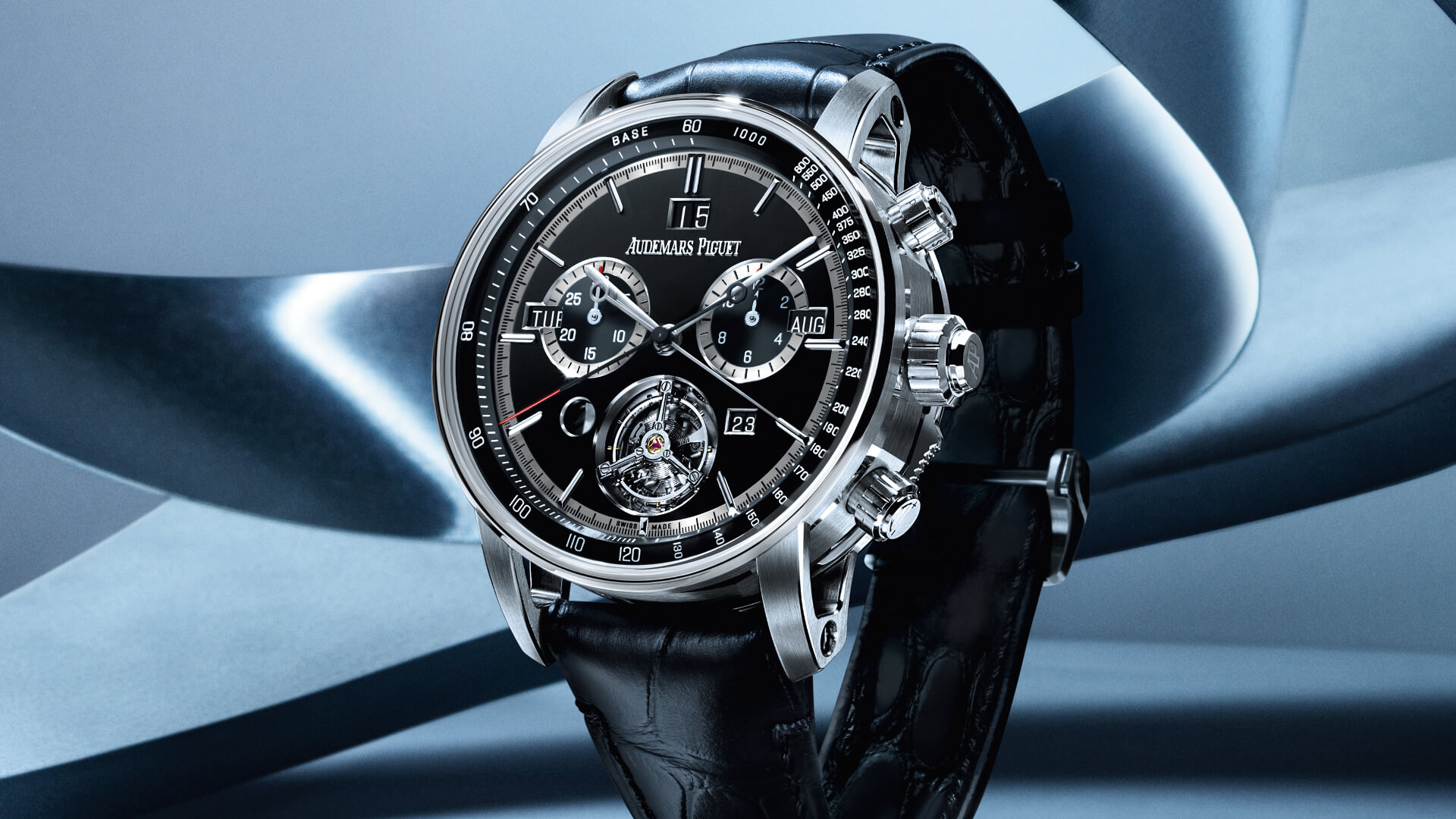
In the four years since Audemars Piguet introduced its Code 11.59 collection—and it was a collection, with the brand debuting six models at once—the general opinion of the line has shifted. Greeted with kneejerk jeering and derision when it was first shown at SIHH in 2019 (the show’s last year), Audemars Piguet has remained vigilant in its efforts to establish the Code 11.59 as more than just “not any of the Royal Oaks.” While the initial collection was undoubtedly and objectively impressive (never mind the naysayers), the hits have kept coming, garnering a 2019 GPHG award, and most recently housing the return of the starwheel. Audemars Piguet is dead serious about this collection, and it’s showing just that by using it to deliver most complicated wristwatch it’s ever made, the all-new Code 11.59 Ultra-Complication Universelle RD#4.
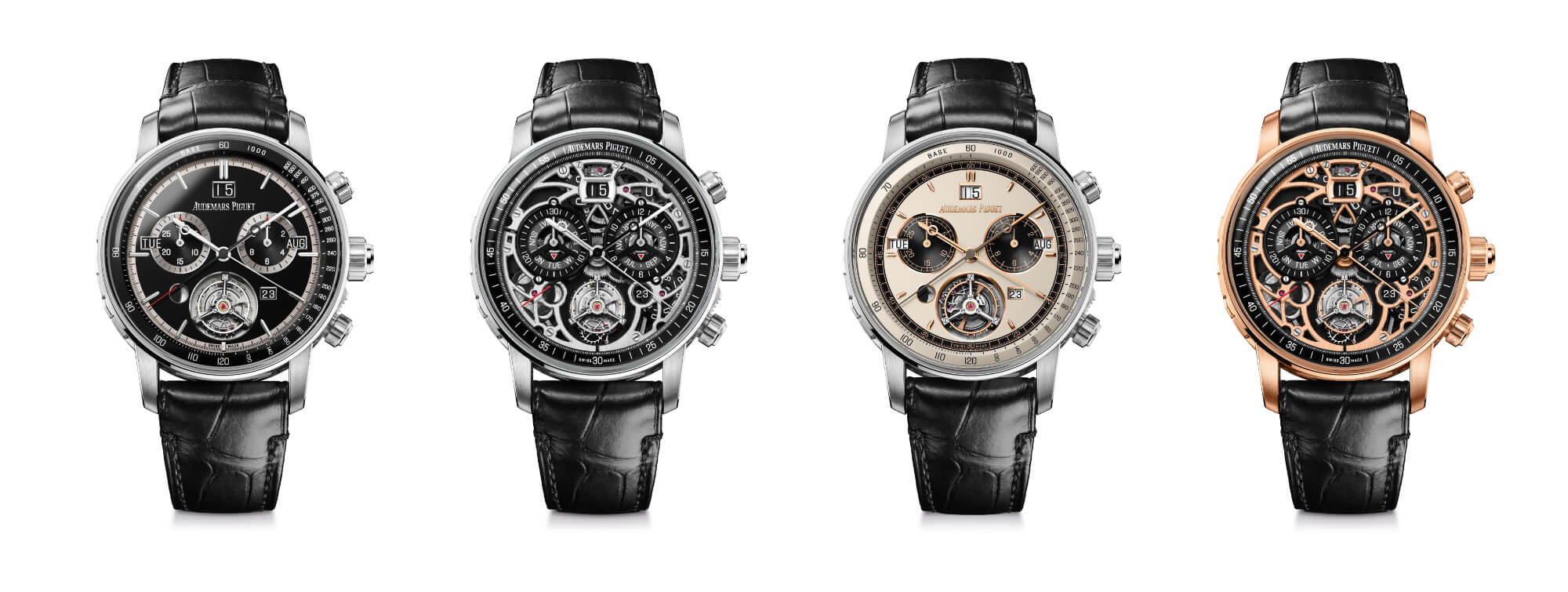
The keen observer/average reader will also have caught the “RD#4” at the end. Not only is this the most complicated wristwatch the brand has ever made, but the fourth in the “Research and Development” series. First introduced in 2014 with the Royal Oak Concept Acoustic Research watch, Audemars Piguet uses this designation to showcase its most impressive horological achievements. The RD#1 was followed in 2019 by the thinnest automatic perpetual calendar ever made (at the time of its release), and in 2022, with the Royal Oak Self-Winding Flying Tourbillon Extra-Thin RD#3 for the brand’s 50th anniversary celebrations. The frequency of RD releases seems to be picking up pace, which means AP is either playing it loose with the appellation or, more likely, that its development team is just highly productive. While the RD series will no doubt continue beyond the watch discussed herein, the Universelle RD#4 seems like a culmination (and combination) of much of the R&D that the brand has conducted over the past decade. The Universelle RD#4 was reportedly seven years in the making and contains 40 functions and 23 complications, paying tribute to and taking inspiration from the 1899 Audemars Piguet L’Universelle pocket watch (which boasted 26 functions and 19 complications). Audemars Piguet is debuting the model in four variants: two in 18k white gold with solid dials in black or beige, and two with what the brand describes as “architectural” dials showing off the movement and offered in 18k white gold or 18k pink gold.
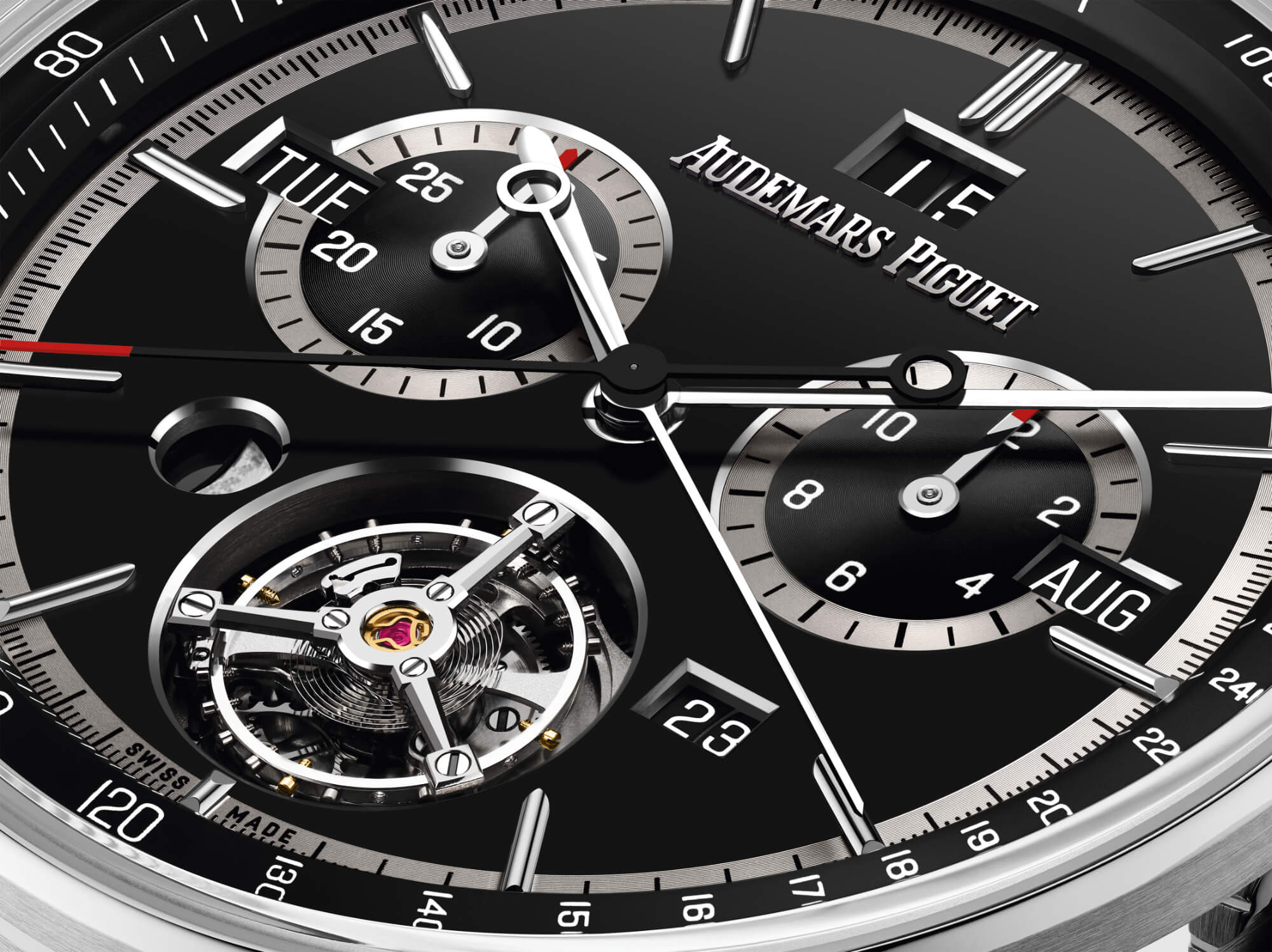

Even AP, in its press release, doesn’t pretend that everything it counts among the 23 complications is important. To wit, it counts the minutes and hours counter of the chronograph and the silent mode of the Sonnerie as complications. So, which matter? Chief among those 23 are a Grande and Petite Sonnerie (including AP’s Supersonnerie, which sees the gongs mounted to a sound board covered by a caseback with openings), minute repeater (which, let’s face it, is just more dinging), a perpetual calendar (with a two-digit year aperture, a jumbo date at 12, and happily omitting the leap year display, that especially superfluous indicator of quadrennial utility), a split-second flyback chronograph (with a swivel clutch to mitigate the hands stuttering when started), and a flying tourbillon (which, I want to make clear, is not really a complication, but an isochronistic compensatory device). The dials display these main complications quite ably, with no feeling of clutter and a pleasing symmetry (and I applaud AP for not trying to put the gongs on display, as many other brands do). The beige and black dials are both described to have an opaline finish, giving them a bit of luster; both feature the collection’s hallmark baton hands, which, along with the applied indices and logo, are the same metal as the cases. On the architectural dials, the indices are omitted to allow the open-worked dial—with bridges and finishing to match the cases–to stand out. My favorite part about these two dials is how the bridges are extended to frame the moonphase, year, and big date. My least favorite thing is that, like most such dials, they appear to drastically reduce legibility. There’s one final difference related to those subdials to note: On the open dials, rotating date discs concentric with the chronograph subdials are used, while on the solid dials, the disc is concealed and the date displayed through apertures. This is some next-level variability for a single movement, as it has to be made to also accommodate the wider date wheels on the solid dials. Some may be put off by the beige dial’s use of white wheels for the date display, or how those windows on the solid dials encroach into the chronograph subdials.
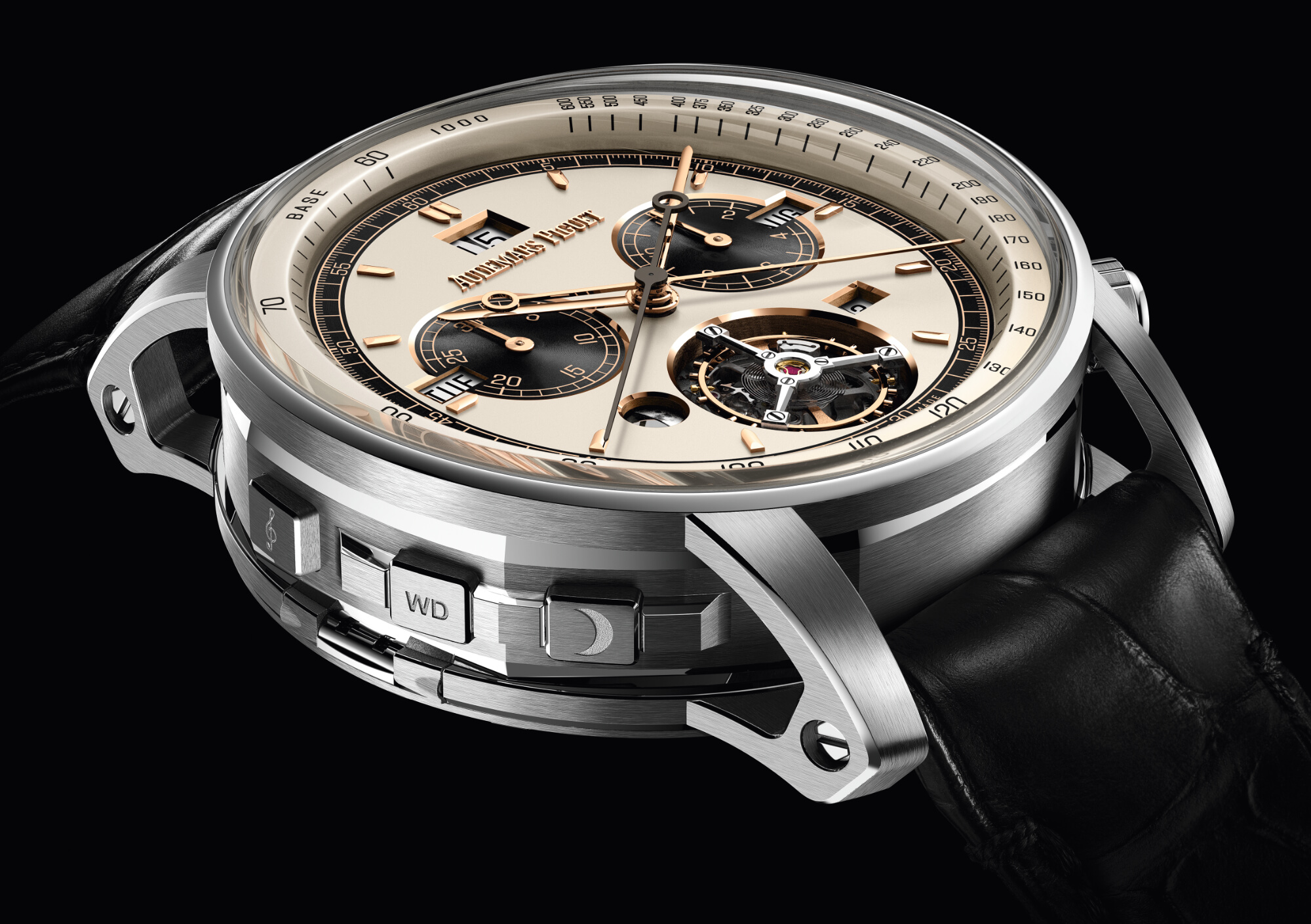
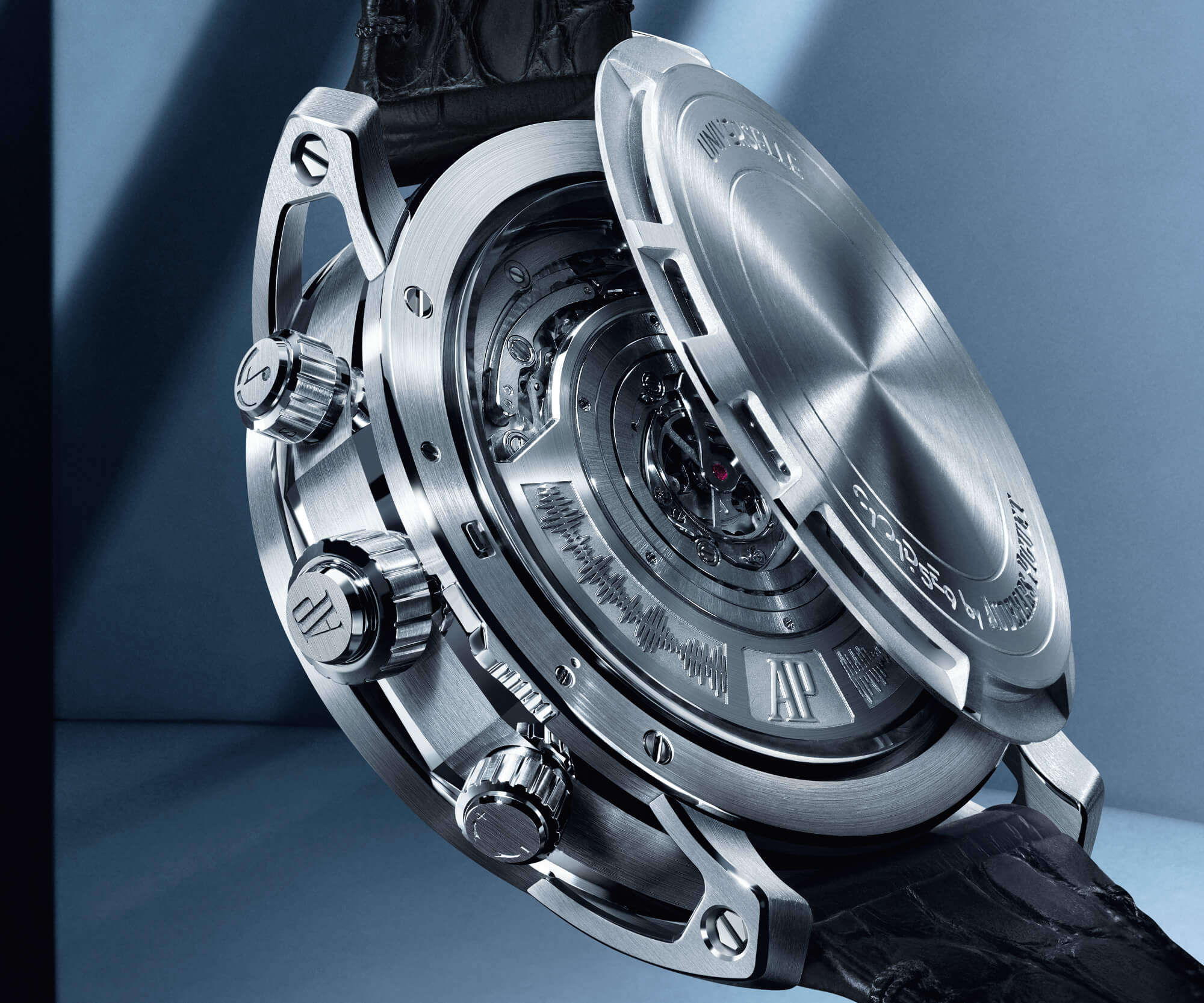
The Universelle RD#4 case required an upsize due to the movement, meaning it measures 42mm-wide and 15.55mm-thick (compared to the Code 11.59’s typical 41mm cases, some of which are as thin as 10.7mm). The case design itself should be mostly familiar: An octagonal midcase recalls the Royal Oak’s design, while a thin, round bezel and caseback, hollowed lugs, and a curved sapphire crystal allow the Code 11.59 watches to do their own, very modern thing. The hand-finishing is carried over from the Royal Oaks, with satin brushing and polished bevels. The standouts are—literally—the crown and pushers, six in total for controlling and adjusting every function of the watch. Helpfully, AP has labeled them with their respective functions. But there are two compelling elements of this case. First, the multifunction crown and chronograph pushers: not only do they operate the split-second chronograph (the winding crown doubles as the split-second activator), but they are also used to set the chiming function and adjust the perpetual calendar (the 9 o’clock side sees dedicated pushers for the activating the repeater, adjusting the weekday, and setting the moonphase). Second, the watch features a vented hunter caseback (the brand calls it “secret”) in matching gold that amplifies the chime when closed and offers a look at the movement when opened, including the Supersonnerie sapphire membrane. The watches come paired with a black alligator strap and a branded gold folding clasp, but also include a hybrid black calfskin strap with rubber backing, probably for when you wear this watch to the gym.
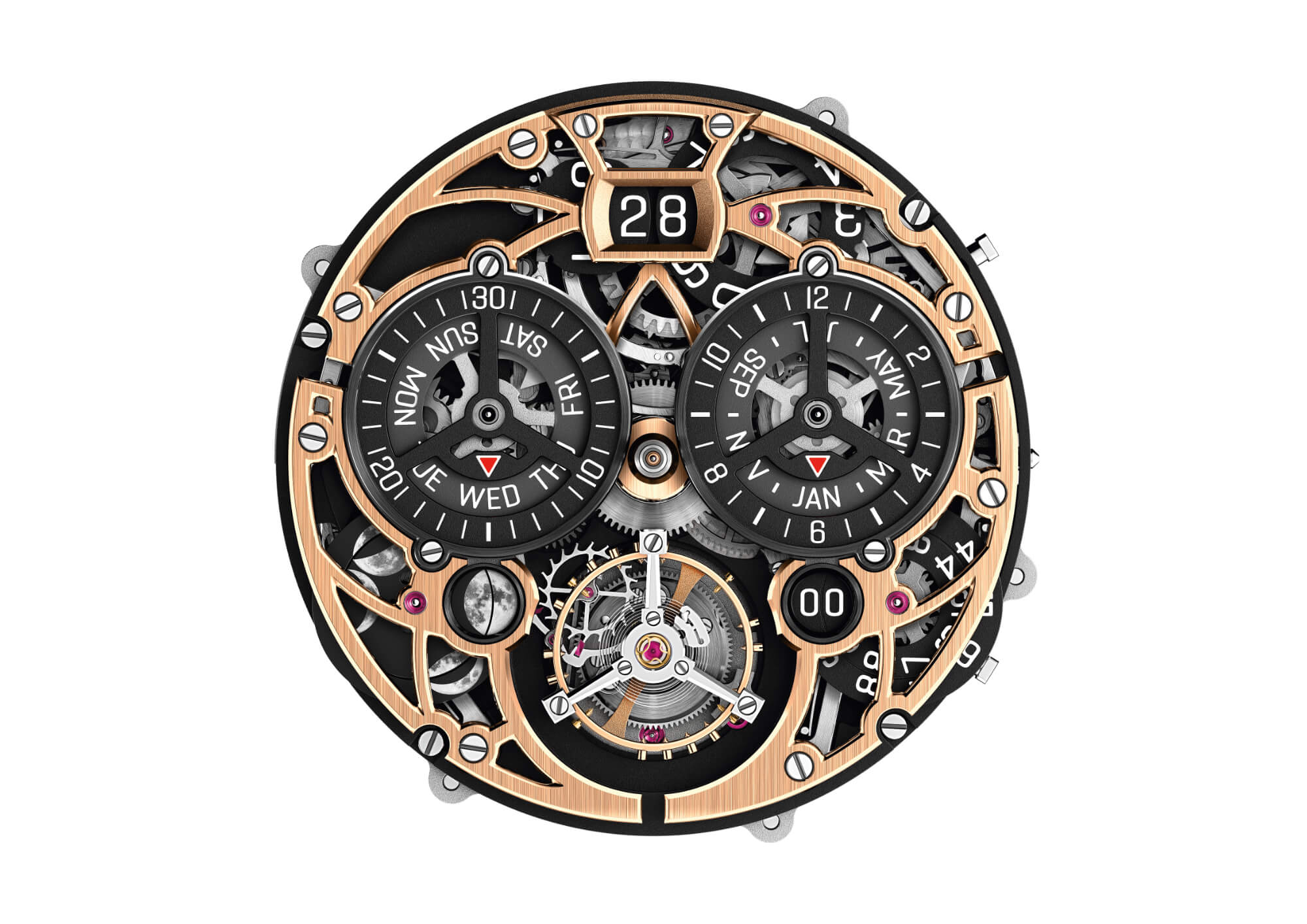
The new calibre 1000 combines a number of previous technologies, like borrowing the primary complications from the prior three RD watches, and innovations that keep the movement as compact as possible, such as merging the split-seconds mechanism into the central rotor’s ball bearing. The movement is finished to the same exacting standards as the case, with the bridges polished and stain brushed by hand. While all four models actually feature openworked movements, only the open dials extend the bridges around certain indicators and use the open concentric date wheels as mentioned. Those two models also benefit from two-tone movements, with black base plates creating contrast to better highlight the rest of the mechanics. The movement features 1,155 components, including 90 jewels, and operates at 3hz with a power reserve of 64 hours (though expect this to run a lot shorter if you’re timing laps, enjoying the gongs of the Sonnerie, and activating the minute repeater every quarter hour—and if you’re not doing that, why do you even have the watch?).
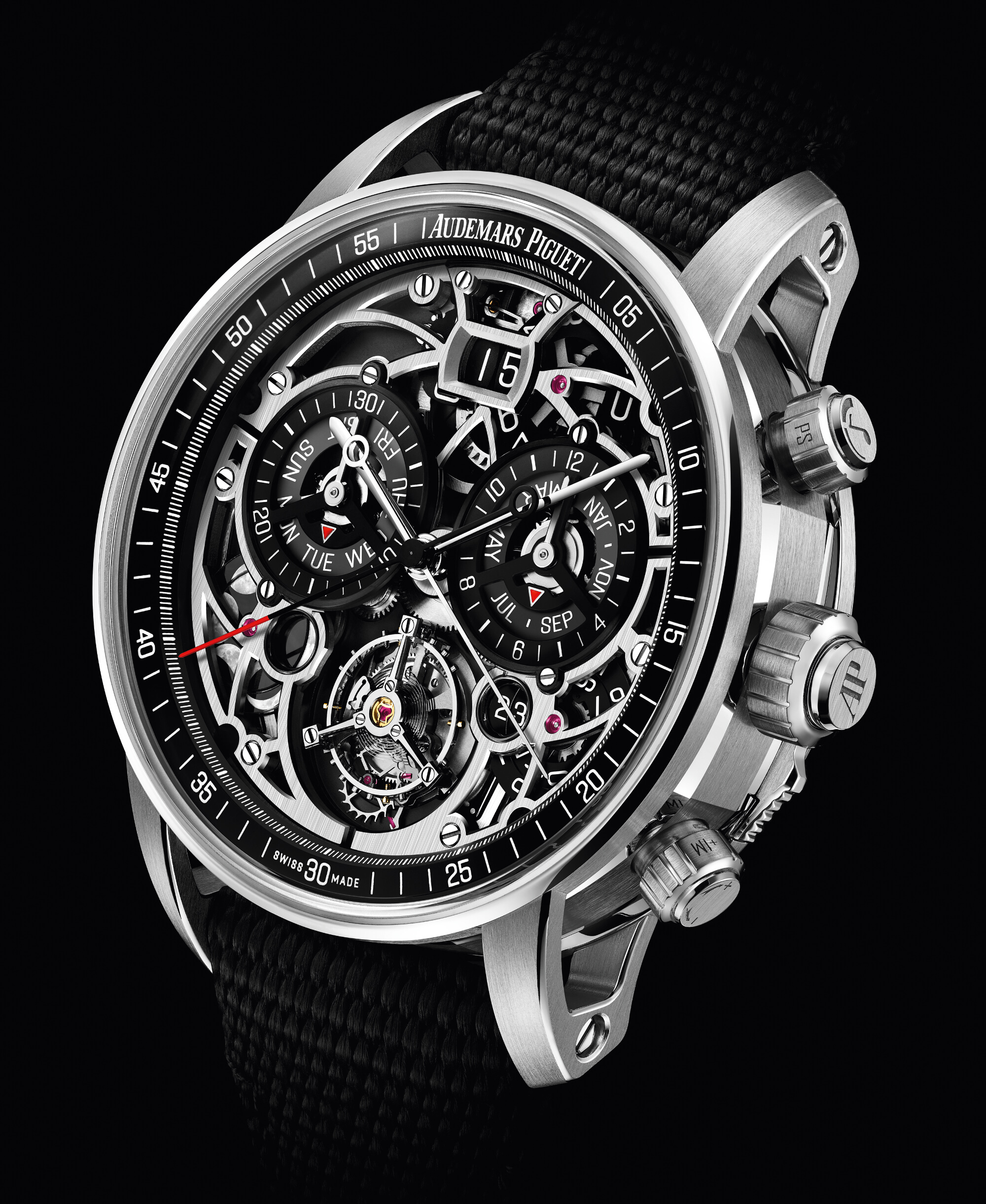
If you’re not impressed, you should be. If not for the technical achievement of jamming so many functions into a wristwatch, for the feat of managing to display those complications so neatly. Perhaps it would be helpful to compare the Universellle RD#4 to its two closest contemporaries: The Patek Phillipe Grandmaster Chime and the Vacheron Constantin Les Cabinotiers Celestia Astronomical Grand Complication 3600. The former (which I like to call the Patty P Grandaddy Ringer) has a case that’s .5mm thicker and a full 5mm wider, and which manages to capture the stodginess of its maker in full. The latter is thinner but 3mm wider, and requires a PhD and/or significant prayer to read. Both have to make use of both sides of the watch to display their complications. You don’t need to love the Code 11.59 design (though over the years, I’ve come to be quite fond of it) to appreciate this watch. Though, if you’ve got some prayers left over after trying to read the VC Celestia, they may help you obtain the AP. The Audemars Piguet Code 11.59 Ultra-Complication Universelle RD#4 is priced at CHF 1,450,000 for the solid dials and CHF 1,600,000 for the openworked dials. So, you know, start saving now. For more information, please visit the brand’s website.

